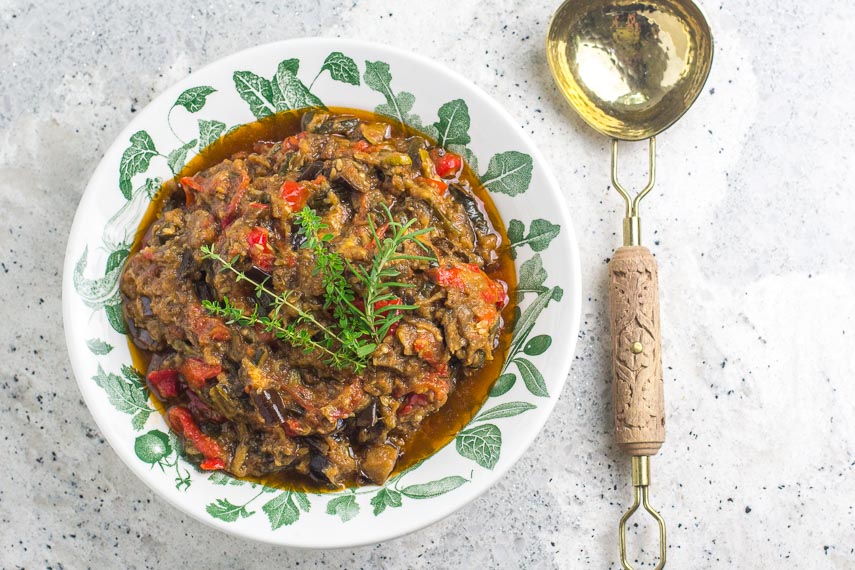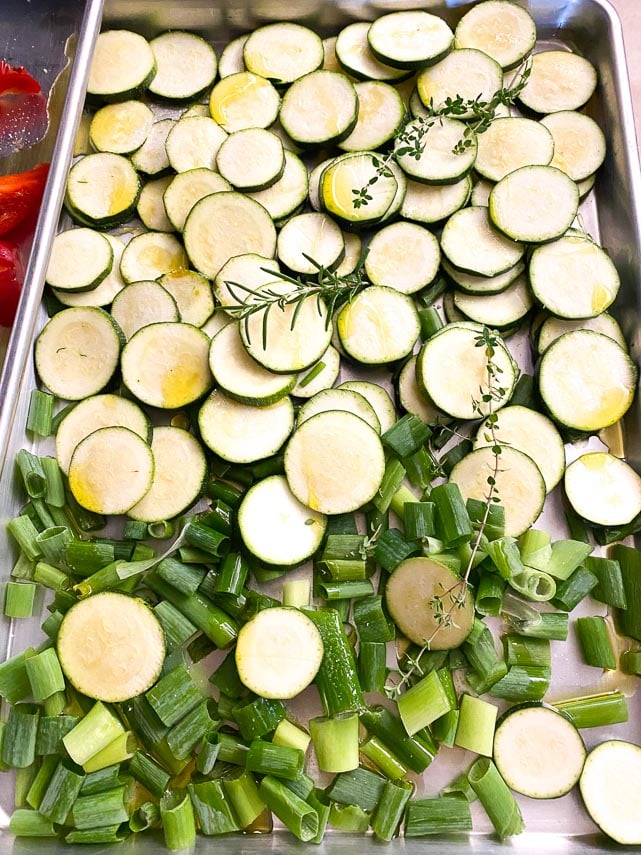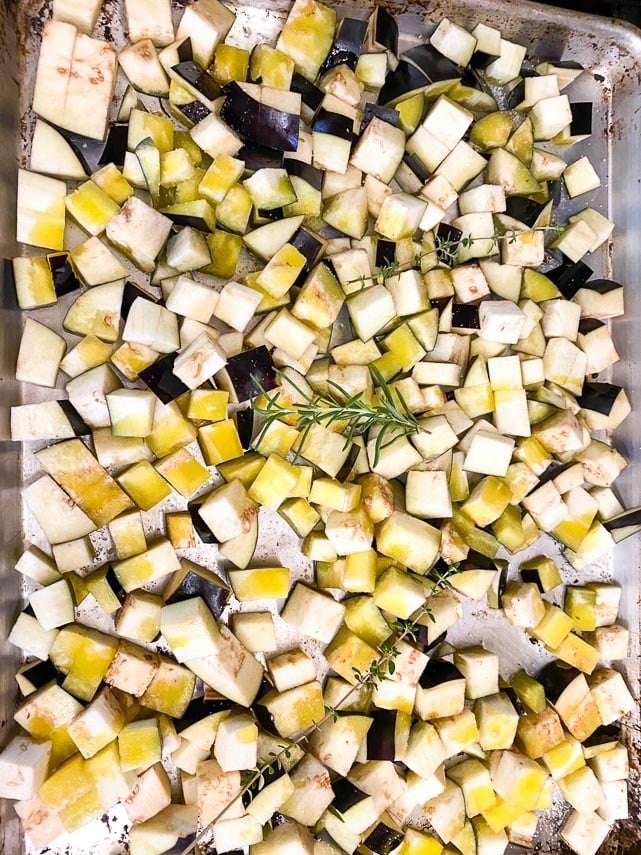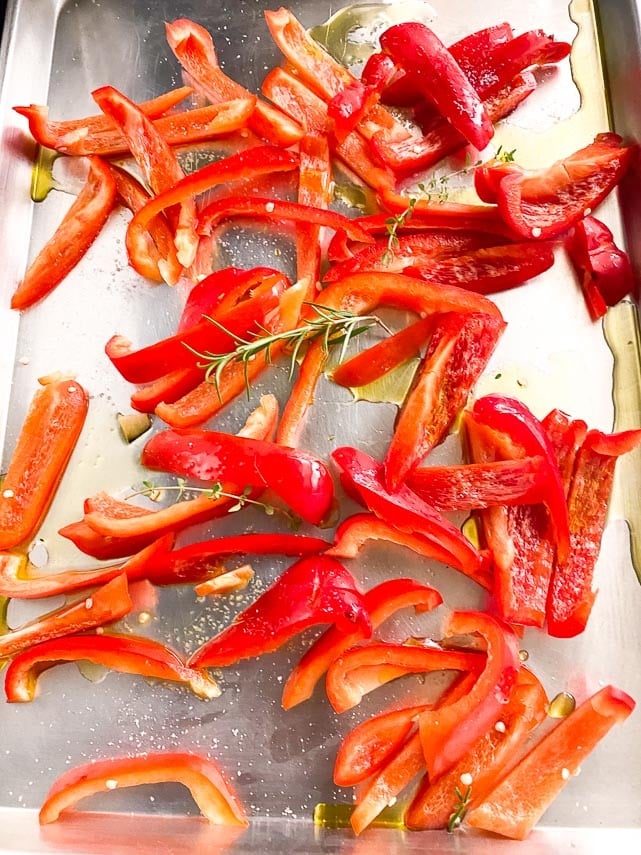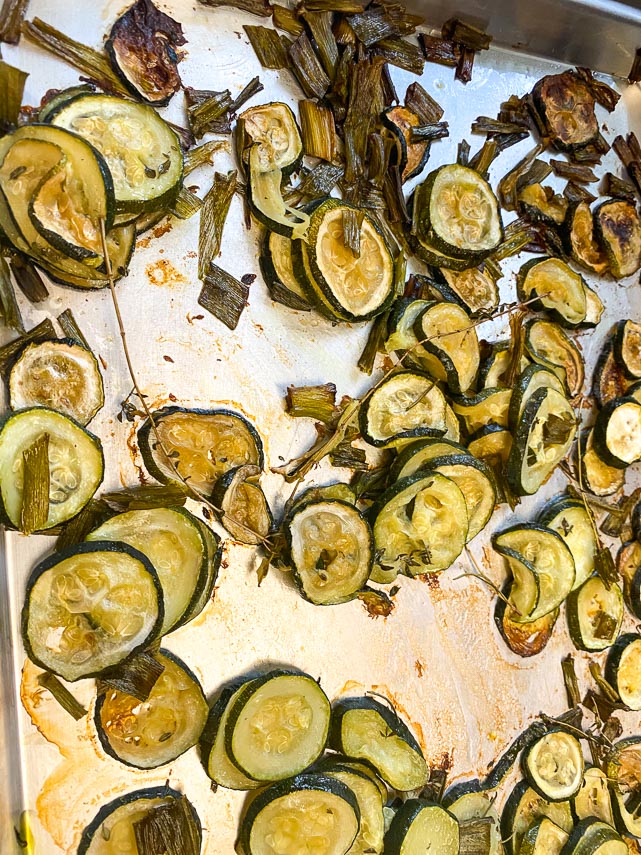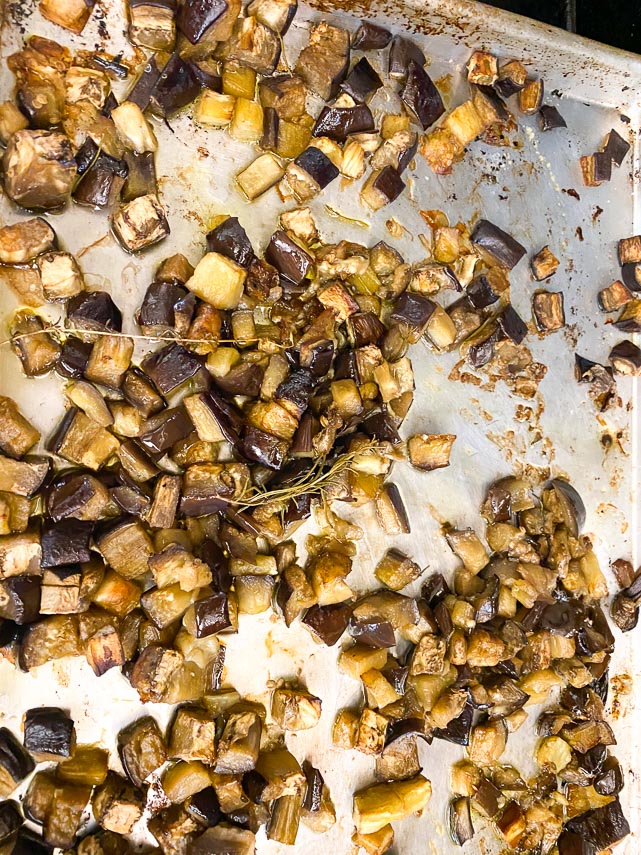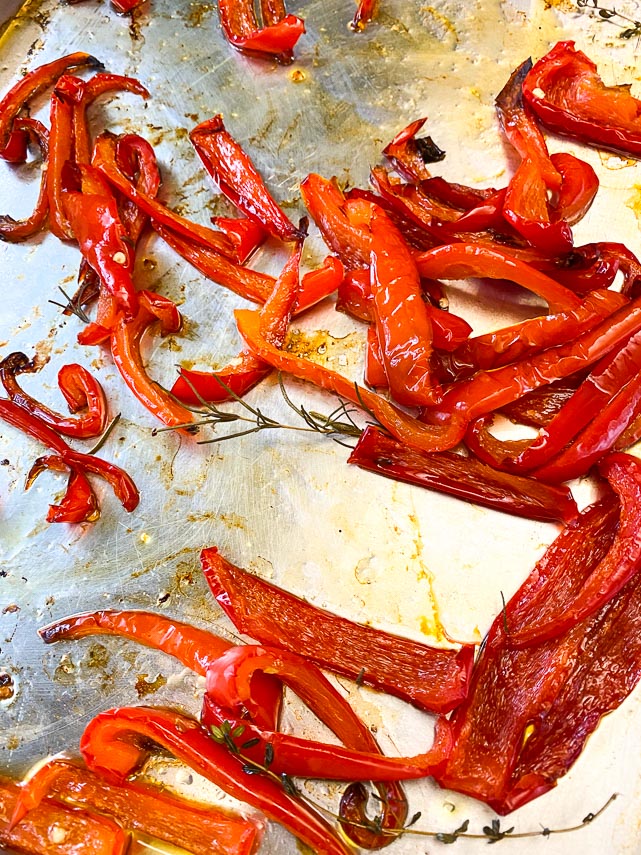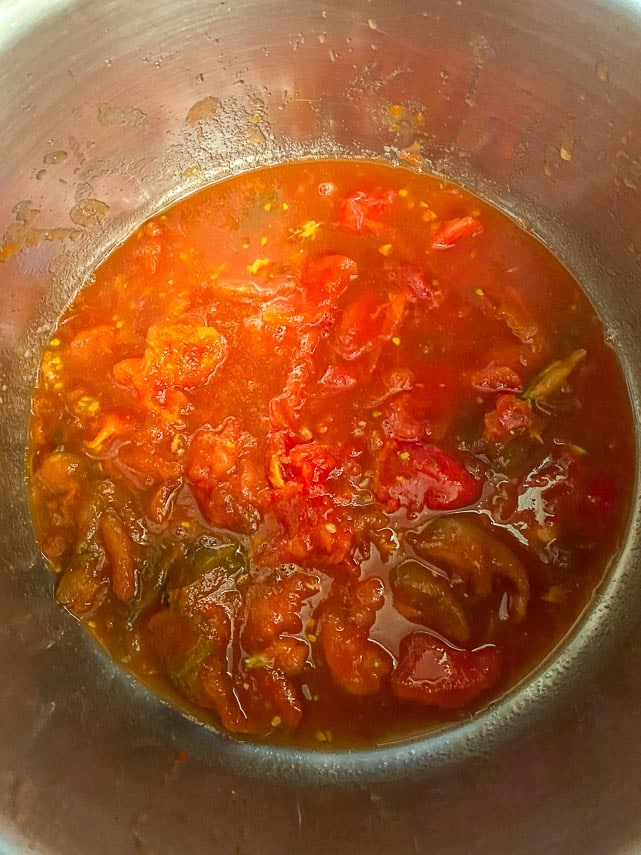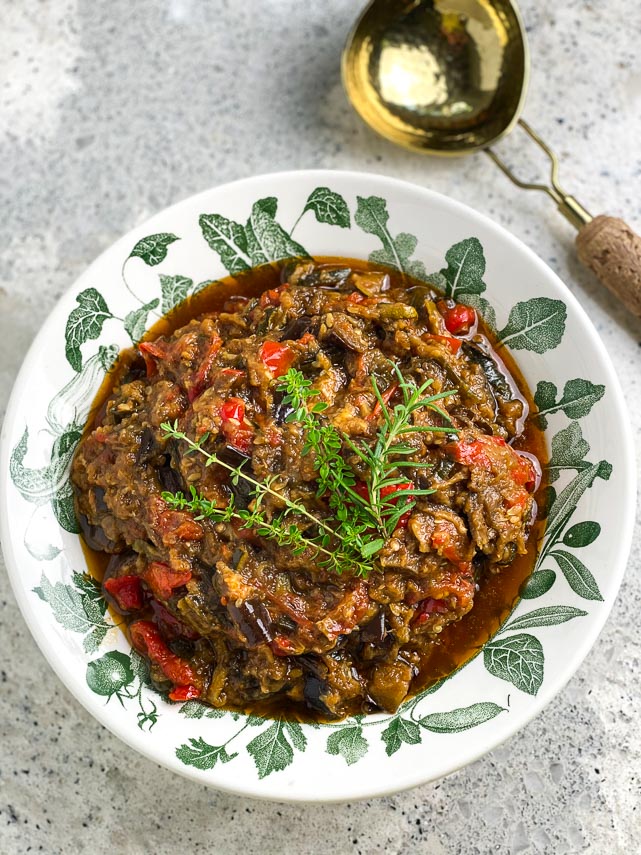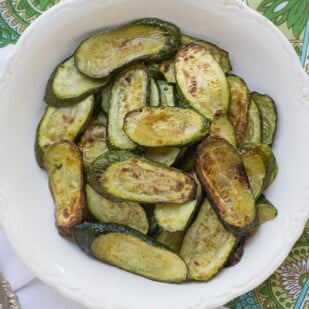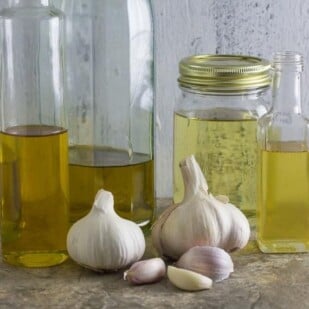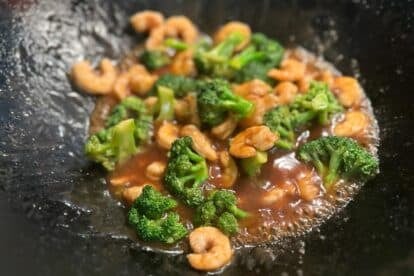Low FODMAP Ratatouille (rat-tuh-TOO-ee) is based on the classic late-summer vegetable stew featuring eggplant, zucchini and red bell peppers. Our version uses scallion greens instead of onions and uses the oven to roast the vegetables with olive oil, which concentrates the vegetable’s flavors. Then the veggies are combined with fresh tomatoes on top of the stove and cooked until soft, silky and rich. Flavored with thyme, rosemary and low FODMAP garlic, this vegan dish is incredibly versatile.
History Of Ratatouille
The modern ratatouille (18th century onwards) hails from Nice, in the Provencal region of France, although some historians have wondered if older versions hail from the Basque region of Spain.
The word “ratatouille” is derived from the Occitan term “ratatolha” as well as the French words “rata”, which means “chunky stew” and the word “touiller”, which means to toss food or stir together.
Ways To Make Ratatouille
There are many approaches to making ratatouille and they each have their devotees.
- The vegetables can be combined all together and sautéed until cooked down in a large, heavy-bottomed Dutch oven.
- Some of the vegetables can be started together first, usually the eggplant and zucchini, then the others added later to the same pot.
- The dish can be started on top of the stove and finished in the oven.
- The vegetables can be layered in a large pot, added sequentially.
- A more contemporary approach is to thinly slice the vegetables and layer them somewhat vertically and overlapping in a casserole dish.
- Our low FODMAP ratatouille version employs roasting in the oven and subsequently stewing on the stovetop.
Seasoning Low FODMAP Ratatouille
It’s All About The Garlic
Ah, seasoning ratatouille, Again, there are many approaches but the first thing we have to discuss is garlic. The original contains a fair amount of garlic, which we needed to reconfigure to be low FODMAP.
Luckily this dish uses a fair amount of olive oil so using Low FODMAP Garlic-Infused Oil (made with olive oil) was a no-brainer, but we needed MORE garlic flavor.
Enter Low FODMAP Garlic Replacer, which works wonders in this dish. It is a powdered product, has a potent garlic flavor and is lab tested and certified low FODMAP by FODMAP Friendly. It is best combined with water-based ingredients, as opposed to oil, so for this dish I add it along with the tomatoes and vegetables once they are combined on top of the stove.
There really is no substitute for this product. If you do not have it, leave it out and use homemade Low FODMAP Garlic-Infused Oil that you have made with double the garlic (we like to do that when making pesto, too).
Herbs For Ratatouille
Our ratatouille is seasoned with fresh rosemary and thyme. It so happens that the vegetables in this dish, along with these herbs, are often found in abundance in the garden at the same time. Some dishes require fresh herbs over dried, or vice versa. In this case you can use dried and we have more info in Tips within the recipe.
There is also a classic herb blend, herbs de Provence, which would be a lovely addition (it happens to be a dried blend, FYI). Herbs de Provence blends can vary somewhat, but they always include lavender, which is very common in Provence. A typical blend includes thyme, basil, savory, fennel and lavender.
Savory and lavender have not been lab tested at this time for FODMAP content. If you are stable and in your Challenge Phase or beyond, I invite you to try this herbs de Provence blend. Once you try it you will think of other uses. It is lovely with lamb, too.
Let’s Talk Eggplant, Zucchini, Red Bell Peppers & FODMAPs
Let’s look at the FODMAP content of the stars of this dish: eggplant, zucchini and red bell peppers.
Eggplant
Eggplant, also called aubergine, has been lab tested by both Monash and FODMAP Friendly and have declared it to be low FODMAP in 1 cup (75 g) amounts. This is plenty to incorporate into low FODMAP recipes.
Zucchini
Zucchini, also called marrow or courgette, has been lab tested by both Monash University and FODMAP Friendly. FODMAP Friendly gives it a “Pass” at ½ cup (75 g) portions. Monash lists ⅓ cup (65 g) as low FODMAP, showing it to be Moderate for fructans in portions of ½ cup (75 g).
Red Bell Peppers
Did you know that some foods contain No FODMAPs? Red Bell Peppers: Red bell peppers have been lab tested by Monash University and have shown no detectable FODMAPs. FODMAP Friendly has lab tested red bell peppers and states that 1 small pepper at 75 g is low FODMAP.
And An Olive Oil Addendum
There is a fair amount of olive oil in ratatouille. All oils are fats and therefore contains no carbohydrates and no FODMAPs. Fat, however, can be an IBS trigger. Know your limits.
How To Make Low FODMAP Ratatouille
As mentioned, our approach begins in the oven and finishes on top of the stove. You do need to be able to get three racks into your oven at once, or the vegetables will have to be done in batches. And you need sturdy half-sheet pans such as these, which you should have anyway.
You will use these pans for roasting chicken, vegetables, making cookies, jelly-roll cakes etc. They will not warp and will last a lifetime. I have used them in several professional, commercial kitchens and they stand up to use.
You also need a large Dutch oven or large stockpot. The recipe does take time, but the majority is hands off in the oven.
Scatter the scallion greens and zucchini on one pan. Drizzle with 3 tablespoons of the oil, season lightly with salt and toss around to coat vegetables (make sure scallions are coated with oil so they do not burn). Lay fresh herbs on top. See recipe Tips for use of dried herbs.
Scatter the eggplant on another pan in as even a layer as possible. Drizzle 3 tablespoons of the oil, season lightly with salt and toss to combine. Arrange herbs on top.
Scatter the pepper strips on the last pan. Drizzle with 2 tablespoons of the oil and season lightly with salt and toss to coat. Arrange herbs on top.
Roast in oven for about 45 minutes to an hour. During the roasting time check on the vegetables once or twice and stir them around on their pans. Each pan might roast at a different rate and moving them from rack to rack during one of your checks is prudent. Roast until soft and beginning to shrink and concentrate in size (and flavor).
Here is what the zucchini pan will look like when done…
…the eggplant…
…and here are the peppers.
Discard fresh herb stems when you remove pans from oven.
Meanwhile, place a strainer over a large Dutch oven. Bring a large pot of water to a boil, drop in tomatoes for about a minute or until skins split. Remove and place in strainer. Cool, then slip off and discard skins. Remove seeds (I just use my fingers) and allow any juice to collect in Dutch oven. Add the tomato flesh to the pot as well, chopped, or simply squeeze with your hands into small-ish pieces. Discard seeds in strainer.
At this point, stir in the FreeFod Garlic Replacer, then add all of the roasted vegetables to the pot, including any oil. Add the bay leaf. Give everything a good stir and add another glug of oil to the pot. Taste and season with salt and pepper, cover and cook over very low heat for about 30 minutes.
At this point the ratatouille is done. You could easily cook it another 15 minutes if you like to even further concentrate the flavors but at this point everything will be well blended and the texture will be rich and silky.
How To Serve Ratatouille
You will be tempted to eat this hearty vegetable stew right out of the pot, but here are some other ways to enjoy it:
- Use as a crostini topper.
- Toss with pasta; stir in some pesto, if you like.
- Serve along with rice.
- Add tofu for a hearty vegan main dish.
- Top with a poached egg and sop up with low FODMAP baguette.
- Serve as a simple side dish to grilled or roasted meats, roast chicken or fish.
- It can be served warm or at room temperature.
- Ratatouille is even better the next day – and the next.
- Get creative!
And yes, we know that if you are a certain age, or have kids of a certain ag group, that when you hear the word “Ratatouille” that you think of an animated rat named Remy who happens to be an amazing cook in a Parisian restaurant kitchen. The movie, Ratatouille, is worth a viewing.
We also have a Chicken Ratatouille for you to check out!
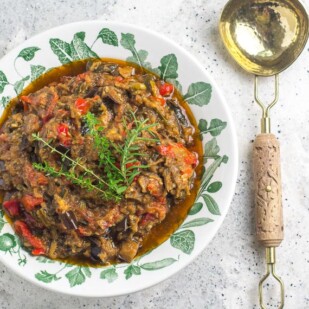
Roasted Low FODMAP Ratatouille
Low FODMAP Ratatouille (rat-tuh-TOO-ee) is based on the classic late-summer vegetable stew featuring eggplant, zucchini and red bell peppers. Our version uses scallion greens instead of onions and uses the oven to roast the vegetables with olive oil, which concentrates the vegetable’s flavors. Then the veggies are combined with fresh tomatoes on top of the stove and cooked until soft, silky and rich. Flavored with thyme, rosemary and low FODMAP garlic, this vegan dish is incredibly versatile.
Low FODMAP Serving Size Info: Makes about 6 cups (1.4 kg); 8 servings; ¾ cup (170 g) per serving
Ingredients:
- 1 cup (64 g) roughly chopped scallions, green parts only
- 3 medium zucchini, about 8-ounces/225 g each, trimmed and cut crosswise into ¼-inch (6 mm) thick discs
- 2 medium eggplant, about 1-pound/455 g each, trimmed and cut into 1-inch (2.5 cm) cubes
- 3 red bell peppers, cored and cut into ¼-inch (6 mm) strips
- Scant ½ cup (120 ml) Low FODMAP Garlic-Infused Oil, made with olive oil or purchased equivalent, plus more as needed
- Kosher salt
- 3 small sprigs fresh rosemary, plus extra as needed (see Tips)
- 6 fresh sprigs thyme, plus extra as needed (see Tips)
- Kosher salt
- 3 large beefsteak tomatoes
- 1 teaspoon FreeFod Garlic Replacer
- 1 bay leaf
- Freshly ground black pepper
Preparation:
-
Position three racks in oven evenly spaced out (see Tips). Preheat oven to 350°F (180°C). Have three half-sheet pans ready to use.
-
Scatter the scallion greens and zucchini on one pan. Drizzle with 3 tablespoons of the oil, season lightly with salt and toss around to coat vegetables (make sure scallions are coated with oil so they do not burn). Lay one small spring of rosemary on top along with 2 small sprigs of thyme (see Tips for info on dried herbs).
-
Scatter the eggplant on another pan in as even a layer as possible. Drizzle 3 tablespoons of the oil, season lightly with salt and toss to combine. Lay one small spring of rosemary on top along with 2 small sprigs of thyme (see Tips for info on dried herbs).
-
Scatter the pepper strips on the last pan. Drizzle with 2 tablespoons of the oil and season lightly with salt and toss to coat. Lay one small spring of rosemary on top along with 2 small sprigs of thyme (see Tips for info on dried herbs).
-
Roast in oven for about 45 minutes to an hour. During the roasting time check on the vegetables once or twice and stir them around on their pans. Each pan might roast at a different rate and moving them from rack to rack during one of your checks is prudent. Roast until soft and beginning to shrink and concentrate in size (and flavor). Discard fresh herb stems when you remove pans from oven.
-
Meanwhile, place a strainer over a large Dutch oven. Bring a large pot of water to a boil, drop in tomatoes for about a minute or until skins split. Remove and place in strainer. Cool, then slip off and discard skins. Remove seeds (I just use my fingers) and allow any juice to collect in Dutch oven. Add the tomato flesh to the pot as well, chopped, or simply squeeze with your hands into small-ish pieces. Discard seeds in strainer.
-
Stir in the FreeFod Garlic Replacer, then add all of the roasted vegetables to the Dutch oven, including any oil. Add the bay leaf. Give everything a good stir and add another glug of oil to the pot. Taste and season with salt and pepper, cover and cook over very low heat for about 30 minutes.
-
At this point the ratatouille is done. You could easily cook it another 15 minutes if you like to even further concentrate the flavors but at this point everything will be well blended and the texture will be rich and silky.
-
The ratatouille is ready to eat but we think it is even better on Day 2 or 3. Simply cool, pack into airtight containers and refrigerate for up to 4 days or freeze for up to 1 month. Serve as a side dish, with rice, throw on a poached egg, heat up with tofu to make a vegan stew or slather on crostini.
Notes:
Tips
- Some ovens only come equipped with 2 racks. I have had success in some ovens by placing a full-size cooling rack on the floor of the oven and using that as a third shelf. You can only try this with ovens that do not have a bottom element.
- Dried Herbs: You can use dried herbs. Simply sprinkle each sheet pan with ¼ teaspoon of rosemary and ¼ teaspoon of thyme (crushed between fingers) and add more to taste later in recipe as described.
FODMAP Information
Our recipes are based on Monash University and FODMAP Friendly science.
- Eggplant: Monash University and FODMAP Friendly have both lab tested eggplant (also called aubergine) and have declared it to be low FODMAP in 1 cup (75 g) amounts.
- Monash University also tells us that eggplant becomes Moderate for FODMAPs at 2 ½ cups (182 g) and High for FODMAPs at 3 ½ cups (260 g). Curiously, Monash says that eggplant contains sorbitol. FODMAP Friendly says it contains fructans and a small amount of GOS.
- Garlic-Infused Oil: Make your own Garlic-Infused Oil or buy a commercial equivalent for the easiest way to add garlic flavor to your food. Fructans in garlic are not oil-soluble, so garlic-infused oil is low FODMAP.
- Red Bell Peppers: Red bell peppers have been lab tested by Monash University and have shown no detectable FODMAPs. FODMAP Friendly has lab tested red bell peppers and states that 1 small pepper at 75 g is low FODMAP.
- Scallions: The green parts of scallions are low FODMAP as determined by Monash University lab testing and can be used to add onion flavor to your low FODMAP cooking.
- Zucchini: Both Monash University and FODMAP Friendly have lab tested zucchini (also called marrow or courgette). FODMAP Friendly gives it a “Pass” at ½ cup (75 g) portions. Monash lists ⅓ cup (65 g) as low FODMAP, showing it to be Moderate for fructans in portions of ½ cup (75 g).
Please always refer to the Monash University & FODMAP Friendly smartphone apps for the most up-to-date lab tested information. As always, your tolerance is what counts; please eat accordingly. The ultimate goal of the low FODMAP diet is to eat as broadly as possible, without triggering symptoms, for the healthiest microbiome.
Nutrition
All nutritional information is based on third-party calculations and should be considered estimates. Actual nutritional content will vary with brands used, measuring methods, portion sizes and more. For a more detailed explanation, please read our article Understanding The Nutrition Panel Within Our Recipes.
